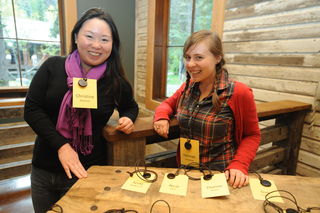
Kristen Engebretsen
It Takes a Village in Arts Education (Part 1)
Posted by Aug 28, 2012

Kristen Engebretsen
Since I started my tenure at Americans for the Arts, we’ve been discussing variations on the theme of: “It takes a village to educate a child.”
During the 2011 Annual Convention, we had two arts education leaders (Ayanna Hudson and Margie Reese) discuss how this works in their respective communities. At the time, we were calling this phenomenon “coordinated delivery.”
We featured this trend in our Fall issue of ArtsLink. "Tete-a-Tete: Integrated Arts Education Approaches" defines coordinated delivery as “collaboration across communities for both shared delivery of arts instruction by arts specialists, teaching artists, and general classroom teachers AND shared leadership for arts education among arts agencies, education agencies, parents, and businesses.”
The article highlights the similarities and differences between two well-known coordinated delivery systems in the country: Arts for All in Los Angeles (Ayanna) and Big Thought in Dallas (Margie).
Here are two charts to illustrate the idea of coordinated delivery:












